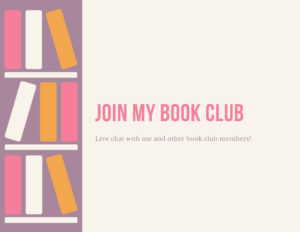Guest Post from Cynthia Ellingsen
Chick Lit Plus, thank you so much for hosting me today! I am delighted to talk with you about the writing process for my first book, The Whole Package.
The Whole Package is a story about three women who lose everything. One loses her job, one loses her fortune and one loses her husband. Together, they open the world’s first restaurant exclusively staffed by scantily clad men. Even though this is a comical premise, the story is actually about the strong friendship these three women share.
Because the story I wanted to write was based around three strong distinct female characters, I was faced with the task of creating them. Before I could even get started, I thought a lot about what I wanted from the three of them as a unit. It was important to me that these women were fine interesting and entertaining, as well as the best of friends. Then, I started thinking about what I wanted from them on an individual basis. I wanted characters that women could easily relate to but at the same time were interesting and unique.
Creating a character from scratch has to start somewhere, right? When I was writing the character Jackie, I had no idea where to start. I knew I wanted someone artistic, enigmatic and who was the pack leader, but I know anything about her. Well… I did have a fabulous friend who loved Angel perfume. For some reason, the smell of this perfume made me think of a woman with fluffy blonde hair, who charmed absolutely everyone who met her. Angel perfume. Such a tiny detail. It’s small, but it was more than enough to begin building who Jackie would become.
While a painter might use broad brush strokes to create a painting, I have always found that when I use broad strokes to write, those characters end up well… broad. There is an expression that “God is in the details” and I find that to be especially true when trying to invent a character. It is very hard for me to create a character without knowing the tiny little details about that person.
What do I mean when I say broad brush strokes? A broad brush stroke is like saying, “I want to have a comical best friend in my story.” A broad character trait like comical is not something I have an easy time writing if I don’t know those tiny little details that make up who this comical person is.
In The Whole Package, I think of Doris as a comical character. But the thing that make her so funny to me are the details and aspects of her personality – the things that she likes and dislikes – that make her come to life. For example, when building Doris, I knew that she had a weakness for Godiva chocolates, that her favorite time period was when she played soccer in high school and that finding simple order in a white room or a row of perfectly lined up sweaters brought her joy. Knowing these tiny details about Doris made it much easier to delve into the larger issues that make her she is.
Once I had a grasp on the smaller details, I started to put the puzzle pieces together to create the whole. During this process, I learned that Doris loved Godiva chocolates because she was going through a hard time and found comfort in chocolate. The fact that these chocolates were Godiva served as another clue – Doris clearly had some money if she could purchase premium chocolates instead of something you’d grab at the checkout.
Another piece I paid attention to was the knowledge that Doris also found comfort in a white room and a clean house. Again, comfort. Why did she need so much comfort? Well, that’s when I started to discover that there was a lot going on with Doris. That there was a reason Doris needed all of that comfort. It was because she had lost her mother, was desperately unhappy and living in the past. Oh. And she was married. And that her husband didn’t understand the depression she was going through, which was pushing him away and…
Doris began to develop as a character.
Of course, every writer is different. Ultimately, it’s just a matter of finding what works for you. In the end, there’s really only one thing that matters: that you have fallen in love with your characters. That you’ll miss them when they’re not around every day, telling you their problems. It’s that moment of complete, pure love that means you’re on the right track.
Let me know your writing tips and tricks. Visit me at www.cynthiaellingsen.com

